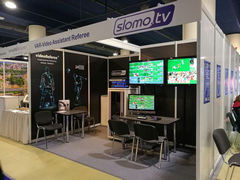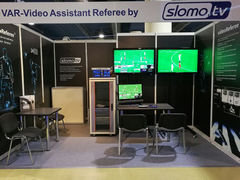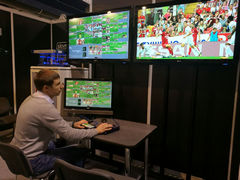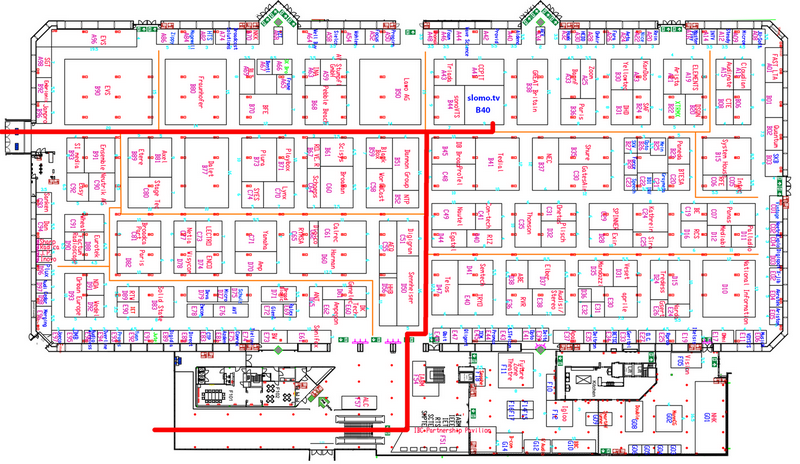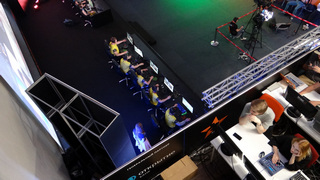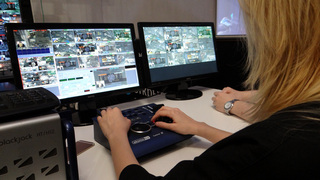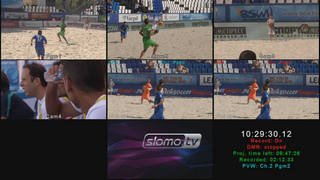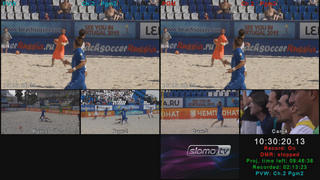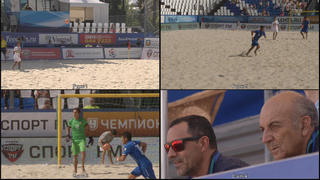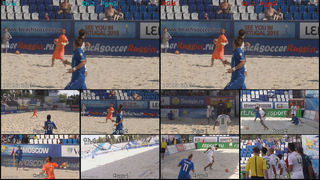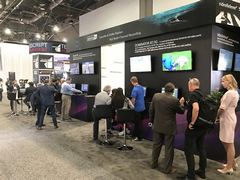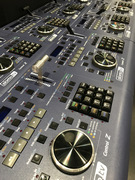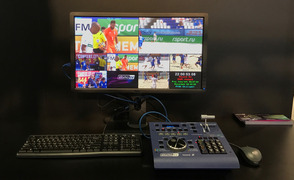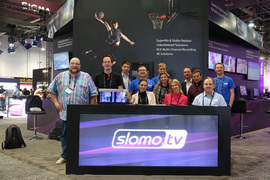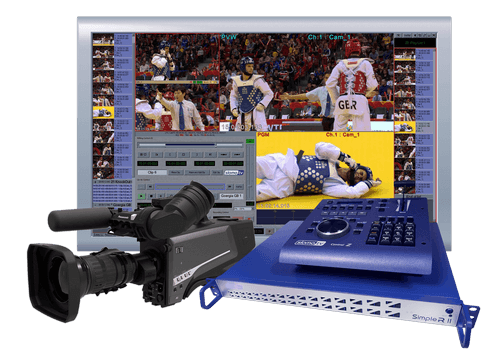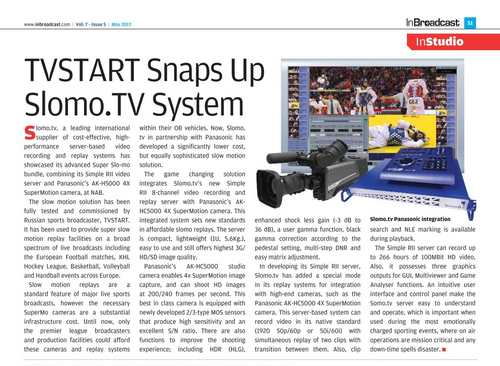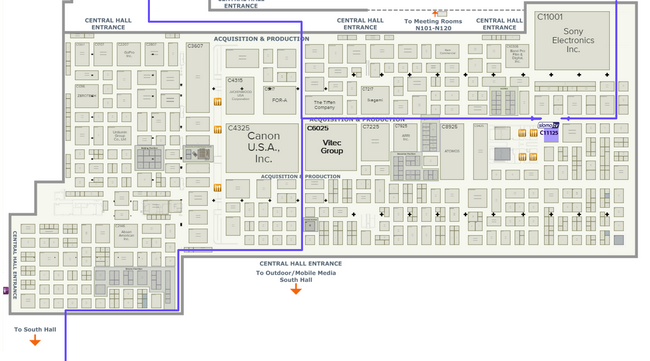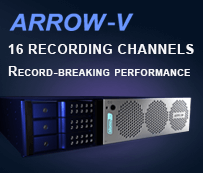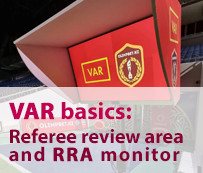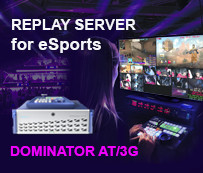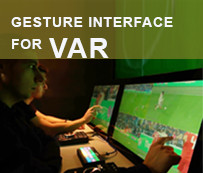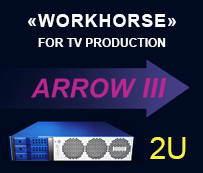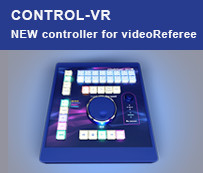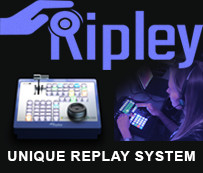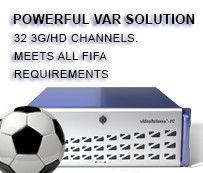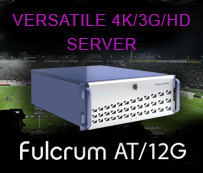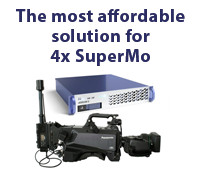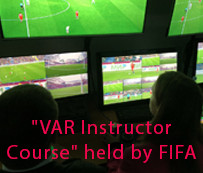- Details
The XV International Specialized Exhibition "Football Market" was held from November 30 to December 2. This is the country's main exhibition dedicated to new technologies in football and video judging.
Slomo.tv could not miss the opportunity to demonstrate its equipment at this landmark event.
Visitors to the exhibition were presented with the newest Video Assistant Referee (VAR) equipment in football - videoReferee®-V.
The videoReferee®-V capabilities were demonstrated to the responsible persons of the Russian Football Union (RFU), Russian Footbal Premier League (RFPL) and representatives of football clubs.
Football specialists could see and test the most advanced video-judging system.
In accordance with the November 29, 2017 joint RFU and RFPL decision, this equipment will be installed in the RFU training center for certified training of Referees and VAR system operators in accordance with the requirements and recommendations of IFAB.
Slomo.tv is one of IFAB technology providers for implementation of VAR systems.
- Details
BlackJack AT/4K – the most powerful in the world 4REC + 2PLAY 4K recording and instant replay server with support of Apple ProRes and Sony XAVC codecs.
It is a new server for working with 4K / 3G / HD video, created on the basis of the RED ARROW – the absolute champion in performance.
BlackJack AT/4K is a continuation of slomo.tv's policy of changing the design of its big servers. Like its predecessor, it has all the necessary capabilities to perform replays and recording for editing in 4K /3G/HD formats. In 4K replay mode the server simultaneously supports 4 input signals, replay of 2 signals with transition effects between them and simultaneous search on all channels with marking of clips. In recording for editing mode the BlackJack AT/4K server allows recording of up to 6 inputs of 4K video signals.
Besides switching to a new uniform platform, the BlackJack AT/4K server differs from the RED ARROW in the ability to use the hardware option which supports Sony XAVC 4K codec. This option allows video recording with XAVC 480/960 codec and provides NLE MXF files without transcoding and export. With this option, the server can record up to 6 4K video signals to NAS for subsequent editing. In the basic configuration, the server uses its own proprietary DCT Based I frame codec (with a of 1200 Mb/sec stream), and Apple ProRes 4K codec for providing video materials for editing systems.
Separately, it should be noted that the transition to a new platform has expanded the range of server operating temperatures maximizing the ambient temperature.
In addition to working in 4K mode, this server allows you to work in 3G / HD / SD modes. In these modes, the number of recording channels when working with replays reaches 20 at 4 (four) physical outputs and 8 playback channels. Because of that up to 4 replay operators can simultaneously work on the server.
In the recording for editing mode, the server records up to 24 channels.
The storage capacity of the built-in SSD disk subsystem is 266 hours of HD video.
BlackJack AT/4K supports all available 4K50p/4K60p transmission options via 4 x 3G SDI.
There is no task which this server could not cope with. Where other manufacturers use several servers, one BlackJack AT/4K will suffice.
- Details
For the sixth time slomo.tv, a leading international supplier of cost-effective, high performance server-based video recording and replay systems will take part at IBC Exhibition. At the booth 8.B40 all IBC visitors will have the opportunity to explore a range of company servers and to familiarize with the new videoReferee® systems. At IBC 2017, slomo.tv will provide the first European showcase of videoReferee®-V - the latest addition to the company’s sports video judging family which is designed to meet actual video refereeing applications in Soccer, Handball, Basketball, Ice Hockey and Athletics (Track and Field). It’s also worth noting that in Amsterdam the company debuts an enhanced version of its Simple RII compact production server, complete with extended 3G SDI support, six recording channels, capability of search on all six channels and two playback channels with transition effects.
- Details
Recently, cybersport is gaining momentum, and experts predict that by the end of 2018, the volume of cybersports business will become comparable to regular sports. And there are objective reasons for this: to become a champion an athlete must begin training from childhood and it is still desirable to have genetic abilities, i.e. it takes a lot of effort, time and money. Cybersport allows a person from “the street” within a fairly short time to achieve certain results. Another attractive side of cybersport is the absence of restrictions related to the physical capabilities of the participants, which makes it available for a wide range of people. In addition to these objective reasons, cybersport is also attractive for viewing public. All these reasons explain its growing popularity.
Any broadcasting of a sport competition is unthinkable without replays. The cybersport is no exception.
LiveSignal.Ru, who broadcast the final mail.ru Warface championship for replays chose the slomo.tv BlackJack AT/4K server.
It is worth mentioning separately the specifics of showing cybersports. While conventional television uses the interlaced scan, the cybersports work with progressive scan. Showing conventional sports can be done with standard HD systems. But if we are talking about cybersports, you need to use replay systems that work with 3G SDI signals. In this case usually common HDMI or DVI to 3G SDI converters are used.
The fact that slomo.tv systems can provide the largest number of 3G SDI replay channels, gave it an undeniable advantage over any other replay system on the market. For example Dominator AT/3G replays 10 3G SDI channels, BlackJack AT/4K works with 12 3G SDI input channels, and Red Arrow can replay up to 20 3G SDI channels.
Competitors, for example, the most powerful 12 channels LSM XT3 system by EVS works only with 4 3G SDI inputs, and Grass Valley K2 Summit 3G works only with 6 channels. Therefore in this particular case the BlackJack AT/4K, which allows recording of 12 channels was chosen.
The specifics of this broadcast allowed instead of using two or three operators to use one replay operator. The built-in multiviewer function that shows all the input and output channels enabled the consultant editor, who was close to the operator, to monitor the whole process of the game, quickly and efficiently create replays, and also prepare analysis of each game in the form of playlists for presentation after each round.
All this was possible due to the presence of slomo.tv systems unique feature - automatic playlist creation from instant replays.
- Details
In contrast to competitors who needed additional hardware for multiviewer, slomo.tv from the very beginning (2005), had a built-in multiviewer in the GUI main interface of our servers. And this was enough when working with 4 SD inputs. Subsequent work with HD signals and increased number of input channels revealed the need to create a separate multiviewer.
Since 2009, all our servers have a built-in multiviewer which can be displayed on a separate monitor via a graphics interface (HDMI™ / DVI / DP) or via SDI, if there is a free video port. In case of a limited workplace space or if there are no free ports, the main GUI monitor can be used in MultiSkin mode.
The MultiSkin function allows switching between various interfaces – the main GUI, Multiviewer and Game Analyzer. It gives a number of advantages:
- No additional monitor is required, which saves space.
- The operator can quickly select the type of interface required at the present moment.
Until now the multiviewer had 3 layout options:
- PRG, PVW and Live windows are of the same size. (At 6 inputs that is ⅓ of the screen linear size);
- On top are windows PRG and PVW (½ of the screen linear size), and below are the Live windows with size, depending on the number of channels;
- Only Live windows of the same size.
In addition to PRG, PVW and Live windows, the multiviewer, in the event of free space, displayed a window including: time-code, recording status, remaining time on DMR™ disks, etc.
These display options were standard for the industry, but did not allow the operator to use the unique ability of slomo.tv replay servers – the simultaneous search on all recorded channels.
That's why we made another multiviewer version – large PRG and PVW windows on top (½ of the screen linear size), and two areas of ½ screen size for displaying the Live and Search windows.
This allows operators working in multiviewer mode to use all the advantages of searching across all channels. At the same time the operator is able to monitor all incoming channels in Live windows.
For 3 or 4 channels systems, the size of the Live and Search video windows is ¼ of the screen's linear size; for 6 and 8 channels it is ⅙.
For special cases of this type of display, there is a sub-mode with additional TV company identification window.
Another innovation is the ability to quickly select the type of multiviewer display. Using Control Z console keys or the GUI the operator directly selects currently needed type of the multiviewer.
- Details
NABShow 2017 ended and we would like to share its results. We have presented many novelties and interesting solutions there.
Expanding videoReferee® family
It has already become a tradition that at the NAB exhibitions to show our technological leadership we present a new top model of the videoReferee® family.
2015 - videoReferee®-3G - 12 channels of 3G signals.
2016 - videoReferee®-4/4G/ 4K - 16 channels HD / 3G + 2 channels 4K.
2017 - videoReferee®-V/ VG.
Inside the company the model number V (five) is stands Victory. The server is designed to work with 24 HD / 720 / 3G channels in any combination. To work with such a number of channels, the resolution of 1920x1080 monitors was not enough and the new system uses interface monitors with a higher, up to 4K, resolution.
The multiviewer in the new system provides more comfortable work for engineers, video judges/referees and video assistants. Using the touch screen it became possible to fully touch-control the system. Now playback, channel selection, marking events, searching video, etc. can be controlled from the multiviewer by gestures.
The videoReferee®-V remains in a standard 4U 19" rack chassis. The SSD based disk subsystem has a recording capacity of up to 160 hrs. of HD video. It has 10GbE ports for networking and includes the vR-Keypad for a more comfortable work of the video judge and his assistant.
We believe that for the few years none of our competitors will be able to reach this level - 24 channels of 3G video.
In addition to that full-size system, we introduced a new portable video judging system - videoReferee®-SR, build on the basis of the most popular replay server Simple RII. The 1U system works with 8 input channels. Its main distinguished features are compactness and mobility. It can also:
- work with an SDI output device for supplying signals from the referee's monitor for use television broadcast;
- use an additional HDMI™ or SDI camera to capture selected scoreboard image and include it on all recorded channels.
The videoReferee®-SR has the ability to connect three monitors for Engineering, Referee's and Multiviewer interfaces. Using a touch screen monitor for the multiviewer will provide gestures control, same as on videoReferee®-V. The videoReferee®-SR is the ideal mobile solution for sport video judging.
At our stand, we also showed a new version of referee's favorite - the all-in-one videoReferee®-Jr., which was first introduced at IBC 2016. The key difference here was the recording of up to 8 channels of HD / 720p / SD video via SDI interfaces. The increased size of the built-in SSD based disk subsystem provides up to 132 hours of 100 Mbps HD video.
Since Jr. 8 has a touch screen, it supports the new gesture control. It also supports operation of vR-Keypad – a special external keyboard for creating labels, positioning on them, controlling monitor displaying modes, etc.
Due to its 8 recorded channels, Jr.8 is suitable for practically all sports.
Multichannel recording and instant replays
The most important and long-awaited novelty in the field of multichannel recording and replays, especially liked by visitors of the stand, was the new Dominator AT/3G. Creating this new version of our popular mid-class server, we provided the ability of simultaneous operation of 2 operators and increased the number of available 3G replay channels to 10. Now this server in replay mode surpasses the most powerful servers of competitors.
Dominator AT/3G allows simultaneous operation of two replay operators in 3G mode when each operator can work with 5 input channels. Operators work independently - each of them has its own SDI output. Each operator besides the main interface has a multiviewer, which greatly improves the comfort and quality of work.
In recording for NLE mode the server records either 8/10 channels with AVID DNxHD and ProRes codecs, or 12 channels DVCPro HD.
Another important improvement is the increase in the number of toolless, trayless DMR™ racks for 3.5" SATA drives located on the front panel. Our proprietary DMR™ technology directly records files in NLE formats and in this case hard drives act as standard TV cassettes for editing material.
Another important and welcomed innovation was the new software for Simple RII 662 servers, which allows two operators to work simultaneously on the same machine. This is important when working at events with high responsibility and high requirements for instant replay accuracy. It is believed that in such cases, each operator should work with no more than 3 cameras. Now this is possible with the second workplace option - each operator works with three cameras, has its own SDI output, monitor with the main interface and possibility of switching to multiviewer mode. Operators can exchange clips and playlists between them.
It is also worth noticing that operators can dynamically choose the type of multiviewer to be displayed.
Together with Panasonic we presented Simple RII based solution for working with Panasonic AK-HC5000 4x super-fast camera. This is now a standard option for all our 3G servers. It's also worth mentioning that Dominator AT/3G can work with two such cameras.
And of course we presented our jewel - the Red Arrow, which can work with four 4K input channels and two output channels, or record 6 channels of 4K video for editing. Working with 3G/HD/SD signals, it simultaneously records 20 channels, plays back 4U size!
Because of four DP graphics outputs, 4 operators can simultaneously work on the same server. Each operator has its own display, which can function in the main interface or Multiviewer mode.
The internal SSD based subsystem provides storage of up to 266 hours of 100Mb HD video. The nine built-in DMR™ Rack on the front panel for 3.5" SATA drives facilitates the transfer of recorded material to editing. The nine 3.5" SATA drives can record 18 channels in ProRes 422 with SD proxy or 24 channels of DVCPro HD with SD proxy.
Traditionally the stand visitors could get acquainted with our budget solutions - the Arrow line of broadcast replay servers in 2U size. We showed Arrow 662.
The NAB Show was interesting and useful. We made new contacts and were covered in some publications:
- Details
At NAB, Slomo.tv (booth C11125), a leading international supplier of cost-effective, high performance server-based video recording and replay systems will showcase its advanced Super Slo-mo bundle, combining its Simple R II video server and Panasonic's AK-HC5000 4X SuperMotion camera.
Today, slow motion replays are a standard feature of major live sports broadcasts, however the necessary SuperMo cameras are a substantial infrastructure cost. Until now, only the premier league broadcasters and production facilities could afford these cameras and replay systems within their OB vehicles. Now, Slomo.tv in partnership with Panasonic has developed a significantly lower cost, but equally sophisticated slow motion solution.
The game changing solution integrates Slomo.tv's new Simple R II 8-channel video recording and replay server with Panasonic's AK-HC5000 4X SuperMotion camera. This integrated system sets new standards in affordable slomo replays. The server is compact, lightweight (1U, 5.6 Kg.), easy to use and still offers highest 3G/HD/SD image quality.
Panasonic’s AK-HC5000 studio camera supporting 4x high speed shooting, which is capable to shoot HD at 200/240 frames per second. This camera is equipped with newly developed 2/3-type MOS sensors that produce high sensitivity and an excellent S/N ratio. There are also functions to improve the shooting experience; including HDR (HLG), enhanced shock less gain (-3 dB to 36 dB), a user gamma function, black gamma correction according to the pedestal setting, multi-step DNR and easy matrix adjustment.
In developing its Simple R II server, Slomo.tv has added a special mode in its replay systems for integration with high-end cameras, such as the Panasonic AK-HC5000 4X SuperMotion camera. This solution can record video in its native standard (1920 50p/60p or 50i/60i) with simultaneous replay of two clips with transition between them. Also, clip search and NLE marking stays available during playback.
The Simple R II server can record up to 266 hours of 100MBit HD video. Also, it possesses three graphics outputs for GUI, Multiviewer and Game Analyzer functions. An intuitive user interface and control panel make the Slomo.tv server easy to understand and operate, which is important when used during the most emotional charged sporting events, where on air operations are mission critical and any down-time spells disaster.
First user: Sports broadcaster, TVSTART
Already, this elegant slow motion solution has been fully tested and commissioned by Russian sports broadcaster, TVSTART. It has been used to provide super slow motion replay facilities on a broad spectrum of live broadcasts including the European Football matches, KHL Hockey League, Basketball, Volleyball and Handball events across Europe.
"Our first test of the Panasonic AK-HC5000 with Slomo.tv's new Simple R II server was during the Euro Cup Handball qualification and it fully convinced us that this combination is very well matched to our needs despite its modest price," explained the Chief producer of TVSTART, Vladimir Shirokov. "It gives us the flexibility we need for live sports broadcasting. It leads us to buy more Panasonic gear and we will employ Slomo.tv servers, which we have used for many years."
At the NAB show, (Booth C11125), Slomo.tv engineers and users will share their unique experience of this system implementation.
About TVSTART
Moscow-based production company, TVSTART is one of the main players in sports television production market in Russia and CIS. Having its own production base the company provides TV production services for many local and International sport events. Over the years, TVSTART has broadcast more than 1000 sport events from different venues. TVSTART technical facilities include: two HD OB vans supporting 8-16 cameras; HD Fly Away production cases 8-16 cameras; two HD DSNG + OB VAN – 8 cameras; 1 HD DSNG.
About Panasonic
Panasonic Corporation is a worldwide leader in the development of diverse electronics technologies and solutions for customers in the consumer electronics, housing, automotive, enterprise solutions and device industries. Since its founding in 1918, the company has expanded globally and now operates 474 subsidiaries and 94 associated companies worldwide, recording consolidated net sales of 7.553 trillion yen for the year ended March 31, 2016. Committed to pursuing new value through innovation across divisional lines, the company uses its technologies to create a better life and a better world for its customers.
- Details
Over 3 years slomo.tv is producing 1920x1080 50p /60p vR-Cam cameras. Unlike standard Full HD cameras they provide twice the number of vertical lines. This allows the video judges to see the image with the full number of lines (1080) for each phase of the movement, making the work more comfortable in making decisions when puck moves the at high speeds. Quite often the television companies want to have the signal from our cameras for use in broadcasts.
Most TV companies in the world use interlaced frame recording format - 1080i. In order to be able to use the signal from videoReferee® cameras it is necessary to install expensive converters 1080p /1080i.
That is why our company has made a new version of the base station (CCU) for vR-Cam 60p cameras, which simultaneously with the 50p/60p signal used in video judging, produces interlaced 1080i signal for use in television.
It is worth noting that vR-Cam cameras have the ability to color correct video, which allows adjusting these cameras to correspond the picture of cameras used by the broadcaster.
To operate the camera in multi-standard environment, including opportunities to work with the old equipment, the new CCU has SD SDI video output.
To send HD video over long distances the optical fiber is commonly used. The old CCU had a separate option installed for transmitting signals over fiber. Our task in developing the new CCU was to provide the ability to use optical fiber as standard. This problem is successfully solved and now the CCU has two optical outputs, one of which is used for the transmission of 50p/60p signal, and the second for transmission of SD or HD SDI.
For GoalNetCam cameras, installed inside the net, we also modified the receiver module to provide the same functions.
For upgrading the previously produced camera control units contact technical support.
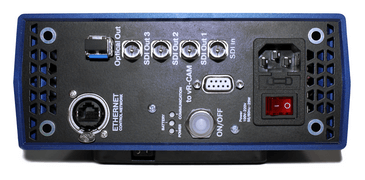
- Details
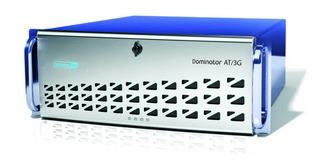
At 2017 NAB Show Slomo.tv (booth C11125) will debut the multichannel 3G/HD/SD video recording server Dominator AT/3G. The system supports up to 10 3G/HD/SD recording channels, four playback channels and powerful search capabilities on up to 10 channels without disrupting the core recording and playback functions. In 'record for editing mode' this server system can record up to 12 channels of HD/SD video.
Building on the success of previous models, the new AT/3G line offers enhanced replay capabilities and two operators can work simultaneously on the same unit. Since the system has four independent graphic outputs each operator can work on the main GUI and a separate multi-viewer monitor simultaneously. In replay mode, the operator can display up to six recording channels and two video playback channels, as well as having access to five channels for clip marking and playlist editing.
Importantly, when operating in SuperMo mode, the new Dominator AT/3G can simultaneously support three Sony, Hitachi or GVG 3X Super Motion and one ISO cameras, or alternatively two Panasonic 4X Super Motion AK-H5000 plus two regular ISO cameras.
For the past three years, Slomo.tv has used SSD based storage subsystems, but now the Dominator AT/3G uniquely stores 266 hours, 100 Mbit of HD video - more than any other similar product. Also, Dominator AT/3G provides recording directly in the "native" file formats of various NLE systems, using proprietary DMR™ technology which mitigates time-consuming file export operations. Alongside full HD recording, Dominator AT/3G enables the operator to create low resolution Proxy copies for draft editing without any additional equipment required.
Simultaneously, video data can be recorded on external file storage systems, as well as on internal RAID storage to secure the recorded files. Dominator AT/3G can be connected via two 10GbE and two 1GbE channels to a network attached storage (NAS) or directly to storage area network (SAN) using its optional 16G fibre channel interface. Also, the system can be connected to SAS-compatible storage. It can be connected to SAN or NAS practically unlimited storage, providing data transfer rates up to 720-1400 megabytes per second. A high speed SAN removes practical limits of recorded video, which is important when recording from multiple 3G/HD cameras, and particularly when simultaneously supporting several of Super Motion cameras.
Dominator AT/3G can be networked in various ways with other Slomo.tv systems by using the company’s networking option.
"Our mission at Slomo.tv is to develop server-based production solutions that are appropriate and affordable to the widest range of TV companies, both large and small, saving them time, money and stress," commented Igor Vitiorets, CTO at Slomo.tv. "In developing the new Dominator AT/3G, we have achieved the next stage in the evolution of our main workhorse server series. Customer reaction has been very positive and we look forward to a busy show."



